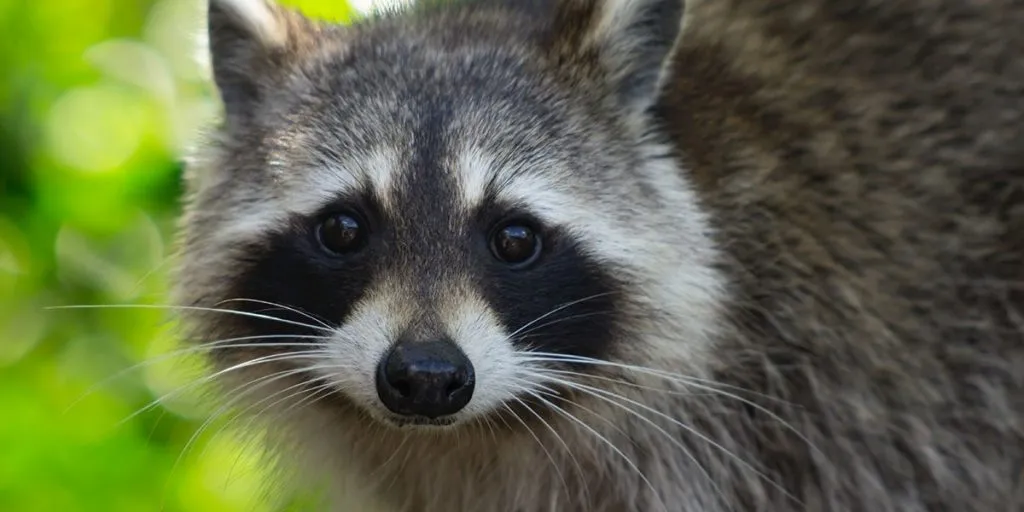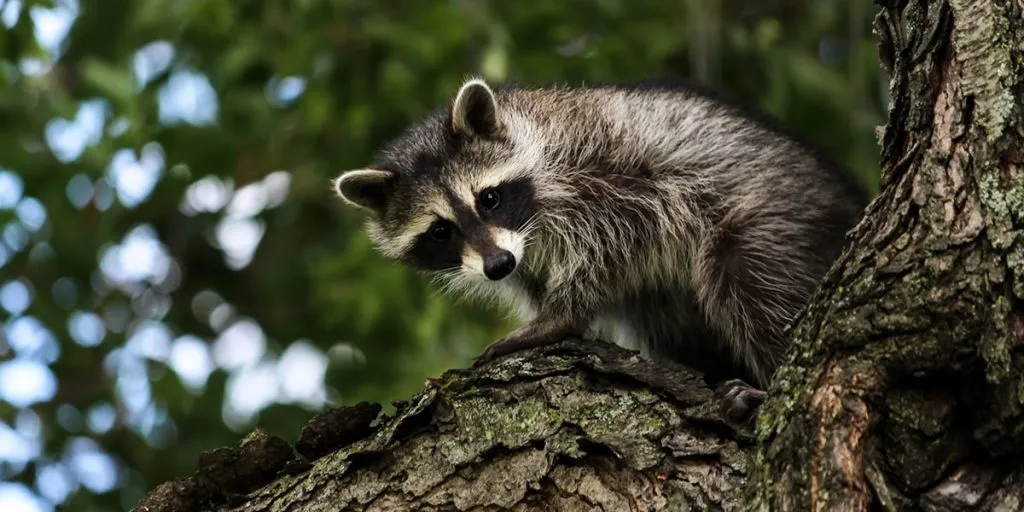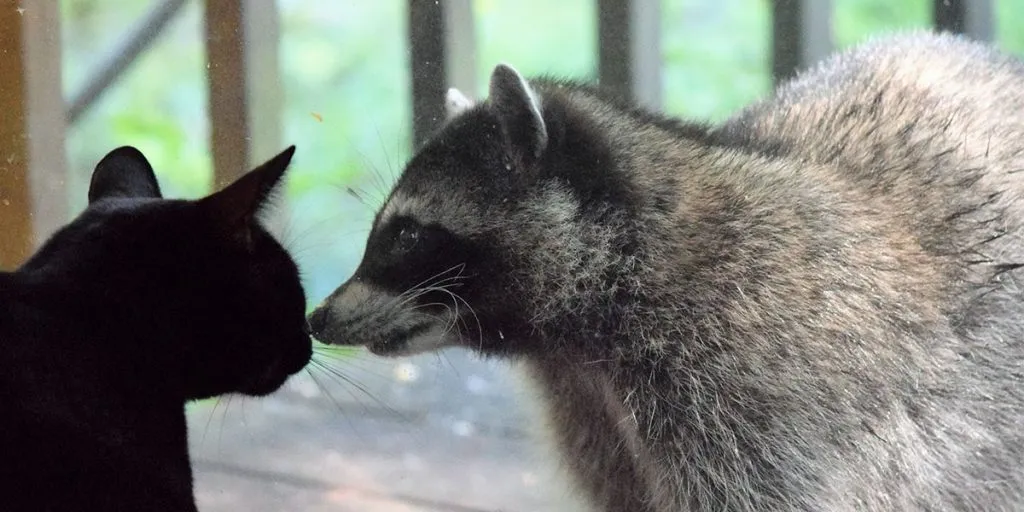Raccoons are part of the food chain, and other animals will eat a raccoon if given the opportunity. Especially in North America, there is a range of natural predators that hunt and kill raccoons for various reasons.
Apart from humans, the most important raccoon predators are the great horned owl, cooper’s hawk, red-tailed hawk, northern harrier, coyote, wolf, and copperhead snake. Animal predators primarily kill baby raccoons, or weak adults.
Predatory animals that eat raccoons include hawks, owls, bobcats, foxes, alligators, snakes, coyotes, bears, wolves, cougars, lynx, ocelots, and domestic dogs. However, humans are by far the biggest predator that kills raccoons. All wild predators combined kill fewer raccoons than humans do.
1. Hawks

One of the biggest dangers for raccoons is predatory birds. Whereas the smaller hawks will generally prey on young or weakened individuals, the larger varieties will sometimes even try to eat bigger raccoons.
Hawks prey on a variety of small mammals, but will not refuse to eat some raccoon meat when given the opportunity. However, they are wary of sick adults that show signs of rabies, a common lethal virus carried by the raccoon.
In the United States (and the wider North-American continent), common hawk species that will kill and eat raccoons include:
- Cooper’s hawk (Accipiter cooperii)
- Red-tailed hawk (Buteo jamaicensis)
- Red-shouldered hawk (Buteo lineatus)
- Northern harrier (Circus hudsonius)
2. Owls

Great horned owls (Bubo virginianus) are the second-largest species of owl in North America, and are distinctively recognizable thanks to their horn-like ears. The great horned owl is known to actively kill and eat raccoons, even though its main diet consists of mice and small rats.
This makes them unique in the owl world, mainly because they are the only large owl species to do so.
However, raccoons are not necessarily scared of (especially the smaller) owls. A raccoon will opportunistically try to climb into a tree and sneak into an owl’s nest, trying to steal their eggs or newborn owls. The mother owl will attack any invading raccoons to defend her eggs or baby owls.
3. Bobcats

While large wild cats do not commonly kill and eat raccoons, they will target them occasionally. Bobcats will hunt and eat raccoons when given the opportunity. A bobcat will generally target individuals, especially if they are weak or old.
Baby raccoons are an important seasonal source of nutrition for the bobcat. The large cats help to keep the raccoon population manageable, which is beneficial to the overall ecosystem.
Bobcats can be found throughout the United States, southern Canada, and northern Mexico. While they tend to avoid people, they will hunt small critters such as raccoons, mice, rats, squirrels, birds, and rabbits.
4. Foxes
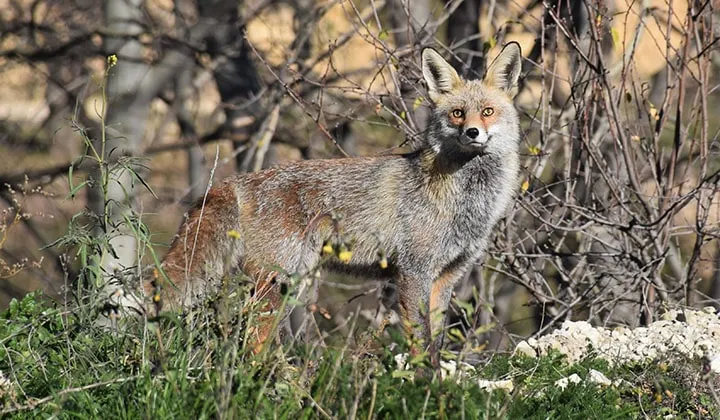
Foxes are a common sight around many suburban neighborhoods. They are in many ways very similar to raccoons: they are omnivores and opportunists. Foxes eat their way through whatever crosses their path. Usually, they will devour animals like rats, mice, or small birds.
Both the red fox (Vulpes vulpes) and grey fox (Urocyon cinereoargenteus) will occasionally eat a baby raccoon, if given the opportunity. As both the fox and raccoon share one habitat, it is not uncommon for a fox to kill baby raccoons in their nests during springtime.
Most raccoons will sleep and have their nests up in a tree. However, it is much more common for a raccoon to nest closer to the ground. They will give birth to 3-5 babies, usually in holes or borrows. This is also where foxes nest (and rest), which causes the two species to cross paths often.
5. Alligators
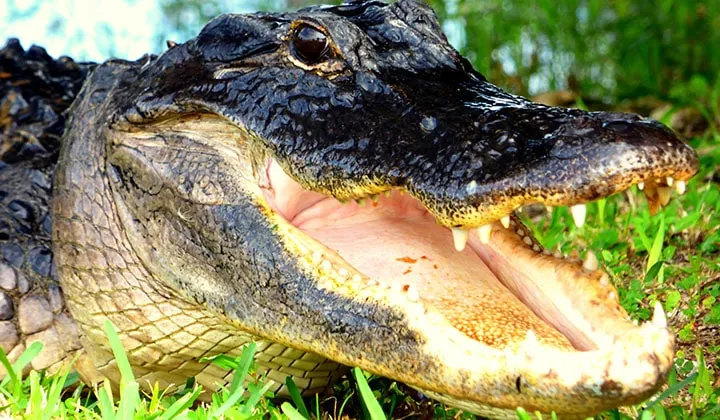
If you’re living in one of the southern states, alligators will not be an unfamiliar sight to you. These ancient predators have survived for many millions of years, lurking in the warmer waters looking out for prey.
Alligators are more likely to kill and eat a raccoon than most people realize. Raccoons tend to venture out in search of water, which is where the alligator will opportunistically prey on them.
With one fierce sneaky attack, the alligator is able to eat both smaller and larger raccoons. Small mammals that come to drink on the edge of a lake or marsh are an important part of their diet. Since raccoons are able to swim, it is not uncommon for the two species to interact with each other.
6. Snakes
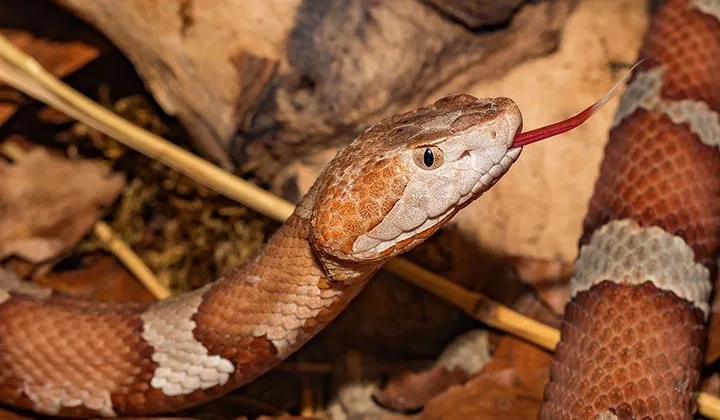
It is mostly the venomous snakes that a raccoon needs to stay away from. Copperheads and rattlesnakes are the most common snakes that will kill and eat raccoons. Sometimes these snakes will kill out of self-defense, as raccoons are also known to opportunistically eat snakes.
You heard that right — a raccoon will even eat a venomous snake on occasion. While very dangerous, a hungry raccoon will not be able to help itself. Once a raccoon manages to find some snake eggs or smaller snakes in its direct vicinity, it will eat them.
Copperheads, rattlesnakes, and other snake species do not commonly consume raccoons. In the wild, the main diet of a snake consists of smaller prey such as mice, birds, lizards, frogs, and insects.
7. Coyotes
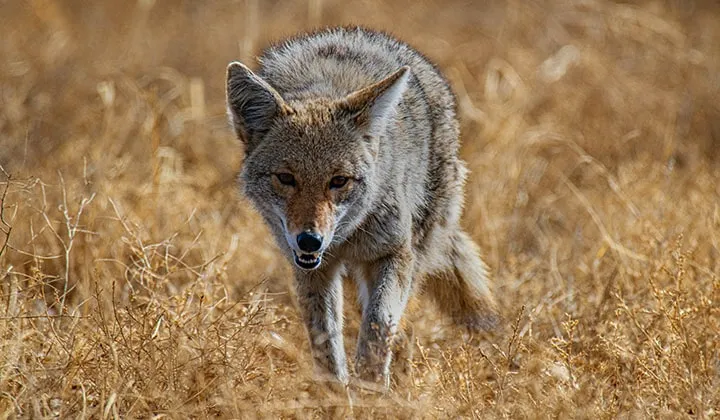
Coyotes are increasingly becoming a common sight on the North American continent. They are scavengers by heart, eating the flesh of dead animals wherever they can find them. But they also hunt down smaller animals to find a meal.
A coyote will commonly kill and eat adult raccoons. While coyotes hunt in packs, a single coyote is also capable of killing a raccoon by itself. This makes the coyote one of the most important predators of raccoons.
Raccoons hate the smell of coyote urine, mainly because these animals are so dangerous to them. If you wish to naturally keep raccoons away from your property, it can be a good idea to spread some coyote urine smell around the yard.
8. Bears
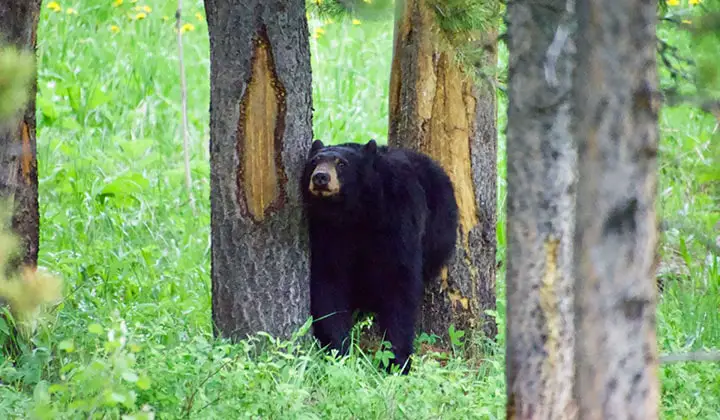
While a raccoon won’t usually be on the menu for a bear, it will occasionally happen that black bears eat juvenile or adult raccoons. Black bears and raccoons live in the same habitats, which creates a lot of opportunity for interaction between the species.
Since bears are omnivores, eating meat is part of the bear diet (next to vegetables, fruits, and nuts).
Bears are definitely not afraid of the much smaller raccoon, which will have a hard time hiding in a tree from a bear. Climbing a tree is a specialty of the forest-dwelling black bear. This makes any type of bear encounter dangerous, even for adult raccoons.
9. Wolves

Wolves are well known for their ability to hunt down a variety of prey in pack formation. They will eat small to medium-sized animals, varying from deer to fish.
The wolf is known to actively hunt, kill, and eat adult raccoons. A pack of wolves will prey on raccoons as far as 1.5 miles away, mainly thanks to their strong sense of smell.
Raccoons are afraid of wolves and will seek shelter in trees, holes in the ground, or similar hiding spots. If a raccoon realizes a pack of wolves is nearby, it will also seek shelter in houses, vehicles, and other man-made objects.
10. Cougars
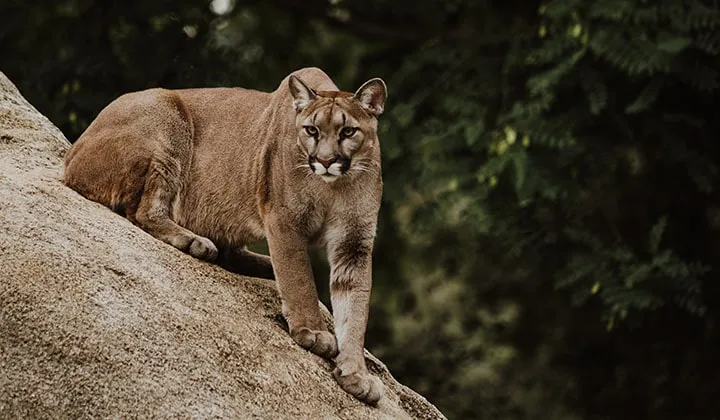
Also known as mountain lions, cougars are fearsome big cats that even humans should be worried about. It comes to no surprise that the carnivorous cougar will hunt, kill and eat adult raccoons if given the opportunity. Cougars live in mountainous forest areas, which is a shared habitat with the raccoon.
Despite the fact that it can happen, raccoons are definitely not the most important prey for a cougar. Apart from raccoons, cougars will generally prefer to eat deer, coyotes, or porcupines.
Cougars might be fearsome and stealthy hunters, they were nearly hunted to extinction by humans. Up until a few decades ago, the cougar population dwindled due to farmers protecting their livestock and hunters looking for a prize. Around the turn of the millennium, the population steadily recovered. In 2008, there were an estimated 30,000 individuals in the United States.
11. Lynx
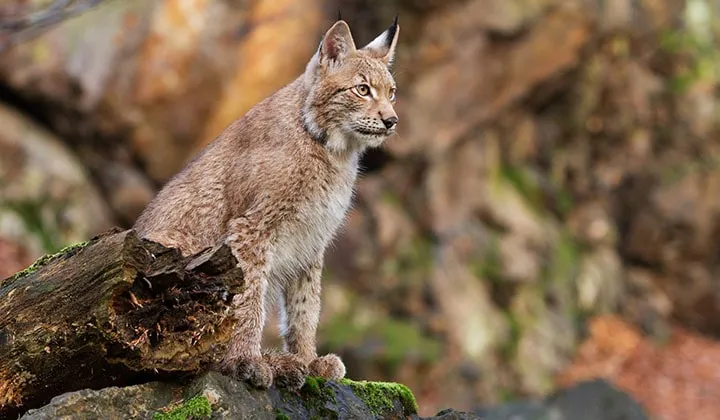
Many fearsome large cats roam the forests of the North American continent, including the Canada lynx. This beautiful animal is sadly almost extinct in the United States, with an estimated 100 to 500 individuals left in 48 states. It is therefore rare, but not impossible for a lynx to hunt, kill, and eat a raccoon.
The primary diet of the lynx consists of deer, rabbits, birds, rodents, and foxes. Raccoons are rarely eaten by lynx, as they less commonly cross paths in the wild.
This does not mean that the lynx will not take an opportunity to launch an attack against an adult raccoon. It however prefers an easy meal: wounded, old, or baby raccoons would be an easier target for this beautiful large cat.
12. Ocelots

Even more beautiful and much rarer is the ocelot (Leopardus pardalis). This spotted medium-sized cat is almost extinct in the wild, with only about 50 individuals remaining in the United States. There is an active breeding program to try and increase those numbers.
The ocelot’s diet in the wild mainly consists of deer, snakes, birds, rabbits, and small rodents. Ocelots are clever, stealthy forest hunters, and will absolutely eat a wild raccoon if given the opportunity.
13. Domestic Dogs
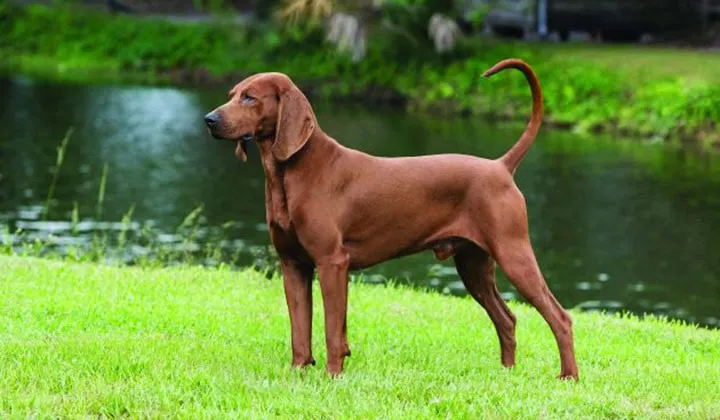
Remember we mentioned that humans were the most important predator for the raccoon? That number is partially inflated by domesticated dogs, primarily thanks to the Redbone Coonhound dog breed.
Redbone Coonhound dogs are used by humans to hunt down wild raccoons for their fur. Coonhounds are specially bred for hunting events, primarily in the Southern part of the United States.
Next to Coonhounds, other domesticated dogs (and even cats) will also contribute to killing raccoons, but they will generally not eat them. Guard dog breeds will attack raccoons in an attempt to protect their homes and families. Hunting dog breeds can kill raccoons due to their predatory instinct and their strong sense of smell.

